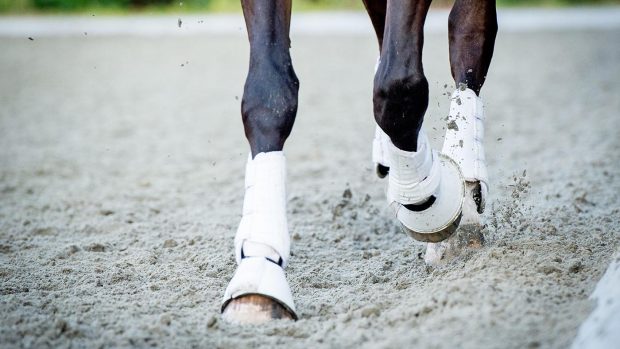Four-star event rider Coral Keen provides one H&H forum user with some helpful advice on how to see a stride when jumping
Q: How to see a stride: “I’ve never really understood what this means. I have generally been advised in jumping lessons to forget about trying to place my horse and just let her sort her feet out. That has worked fine — I just look at the top pole and she figures out where to take off from. But she had a tendency to rush at fences and so I went through a phase with a previous instructor of constantly making her wait, holding her for an extra stride and jumping out of the bottom of the fences and I also did lots of grid work and canter poles. She is so much more controlled now but either she or I have now got into the habit of getting in too deep now and I am not sure how to correct it that. At our first 90/95cm class last week she caught poles when she got too close to the fence. I sent the video to my new instructor who said I need to work on ‘seeing a stride’ as she is getting too deep. So does it really mean adjusting the canter to place her — I can already ‘see’ that she is getting deep. If so, was the earlier advice (don’t try and place her) wrong or is it just another step on the learning curve?”
A: You have the right idea — seeing a stride is not an exercise in itself, it is a combination of getting everything right up until that point that allows you to ‘see the right stride’.
I get asked what ‘seeing a stride’ is all the time, but it’s a phrase that I think is overused. When jumping, the best thing to think through your mind is ELBOW. This is an acronym that I took from Lucinda Green and it is something that has always stuck with me:
E is for engine. Make sure you have a good quality to the canter. It needs to have lots of bounce, and your horse needs to be in front of your leg and taking you forwards to the fence.
L is for line. You need to make sure that the line you are on is straight to a fence, this means using your turn and giving yourself just the right amount of time to approach the jump head on.
B is for balance. Both your own balance and your horse’s balance, making sure you don’t get in front of the movement.
This leaves you with OW, which is exactly how you will feel if you don’t secure the first three letter of the acronym!
Continued below…
Related articles:
Getting the right canter, a lot of the time, comes down to your flatwork and the ability to lengthen and shorten the canter. Once you get this feeling on the flat of being able to adjust, then slowly introduce the jump into the equation.
When anyone asks me how to see a stride I tell them not to worry about it, but to think more about the quality of the canter, and if the horse is straight. If you start with this, seeing a stride will become irrelevant as you’ll be able to feel through your horse the right time to take off. If you can feel that you’re going to be deep then of course you can use your balance to help the horse, but you must have a good canter to do this in the first place.
For all the latest news analysis, competition reports, interviews, features and much more, don’t miss Horse & Hound magazine, on sale every Thursday.




